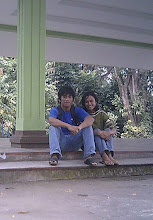Apakah benar ada GKSBS di Yogyakarta? Jelas saja jawabannya tidak ada. Yoyakarta yang dikenal sebagai kota pelajar, menjadikan kota ini sebagai kota tujuan bagi orang-orang yang ingin menuntut ilmu, dan pada kenyataannya tidak sedikit warga GKSBS dan Sumatera bagian selatan khususnya yang juga datang ke Yogyakarta untuk bersekolah atau kuliah, dan sebagaian kecil dari orang-orang tersebut adalah “kami”.
Berita dari mulut ke mulut membawa kami akhirnya bisa bertemu dalam suatu wadah yang bernama Persekutuan Mahasiswa Gereja Kristen Sumatera Bagian Selatan, yang kemudian disingkat PM GKSBS. Entah dari berapa tahun yang lalu PM ini sudah terbentuk, namun kini kami ada bersama, bersekutu dan saling membangun dalam kasih.
Senang sekali rasanya, pada saat di perantauan bisa bertemu dengan saudari-saudara yang pada dasarnya memiliki latar belakang yang sama dengan diri kita. Hingga saat ini yang aktif mengikuti PM kurang lebih 15 orang, dan secara resminya di tahun 2009 ini, kami sudah berhasil merencanakan dan menjalakan 3 kali pertemuan yang menyenangkan, tapi jelas bahwa ada juga pertemuan yang kami lakukan secara pribadi satu dengan lainnya yang tidak terdata karena bersifat secret and confidential.
Sekelompok kecil orang dalam sebuah organisasi yang juga kecil dan melakukan kegiatan-kegiatan yang kecil namun memiliki makna yang besar bagi setiap anggotanya, itulah yang selama ini coba kami lakukan. Menurut saya (penulis), sekalipun belum mendapakan “suntikan” baik itu yang berkaitan dengan dana atau yang lainnya dari pihak manapun yang bisa membuat kami menjadi organisasi yang mapan secara financial maupun structural, namun kami bukanlah ada/berada di dalam suatu organisasi yang kecil (atau bahkan hampir “mati”). Bagi saya organisasi ini memang membutuhkan “suntikan” dari pihak lain, namun bukan berarti selama suntikan itu belum ada kita menjadi “ciut”. PM GKSBS adalah organisasi yang besar karena di dalamnya terdapat orang-orang yang besar yang mau dan mampu membuktikan keberadaannya kepada pihak lain, dan juga sehat secara jasmani maupun spiritual.
Dari tulisan ini sekiranya dapat membesarkan hati para Kakak-kakak kami yag juga dulu pernah ikut berperan untuk membesarkan dan meperkenalkan PM ini kepada kami, dan juga sekiranya melalui tulisan ini bisa membuktikan kepada Sinode GKSBS bahwa para Pelayan di GKSBS telah mampu mendidik kami menjadi anak yang mengenal Tuhan Yesus Kristus dan setia kepadaNya.
Berita dari mulut ke mulut membawa kami akhirnya bisa bertemu dalam suatu wadah yang bernama Persekutuan Mahasiswa Gereja Kristen Sumatera Bagian Selatan, yang kemudian disingkat PM GKSBS. Entah dari berapa tahun yang lalu PM ini sudah terbentuk, namun kini kami ada bersama, bersekutu dan saling membangun dalam kasih.
Senang sekali rasanya, pada saat di perantauan bisa bertemu dengan saudari-saudara yang pada dasarnya memiliki latar belakang yang sama dengan diri kita. Hingga saat ini yang aktif mengikuti PM kurang lebih 15 orang, dan secara resminya di tahun 2009 ini, kami sudah berhasil merencanakan dan menjalakan 3 kali pertemuan yang menyenangkan, tapi jelas bahwa ada juga pertemuan yang kami lakukan secara pribadi satu dengan lainnya yang tidak terdata karena bersifat secret and confidential.
Sekelompok kecil orang dalam sebuah organisasi yang juga kecil dan melakukan kegiatan-kegiatan yang kecil namun memiliki makna yang besar bagi setiap anggotanya, itulah yang selama ini coba kami lakukan. Menurut saya (penulis), sekalipun belum mendapakan “suntikan” baik itu yang berkaitan dengan dana atau yang lainnya dari pihak manapun yang bisa membuat kami menjadi organisasi yang mapan secara financial maupun structural, namun kami bukanlah ada/berada di dalam suatu organisasi yang kecil (atau bahkan hampir “mati”). Bagi saya organisasi ini memang membutuhkan “suntikan” dari pihak lain, namun bukan berarti selama suntikan itu belum ada kita menjadi “ciut”. PM GKSBS adalah organisasi yang besar karena di dalamnya terdapat orang-orang yang besar yang mau dan mampu membuktikan keberadaannya kepada pihak lain, dan juga sehat secara jasmani maupun spiritual.
Dari tulisan ini sekiranya dapat membesarkan hati para Kakak-kakak kami yag juga dulu pernah ikut berperan untuk membesarkan dan meperkenalkan PM ini kepada kami, dan juga sekiranya melalui tulisan ini bisa membuktikan kepada Sinode GKSBS bahwa para Pelayan di GKSBS telah mampu mendidik kami menjadi anak yang mengenal Tuhan Yesus Kristus dan setia kepadaNya.
